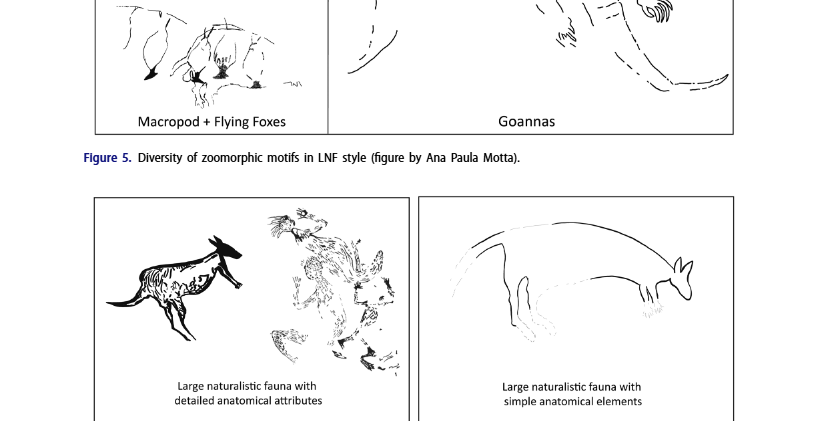2025

Balanggarra Aboriginal Corporation, Peter Veth, Sven Ouzman, Ana Paula Motta
We argue for the inclusion of a new Mid-to-Late Holocene rock art style—the Linear Naturalistic Figures (LNF)—to the sequence of Kimberley rock art styles. These figures have been identified through formal and contextual analysis at 22 sites in the northeastern Kimberley. Linear Naturalistic Figures are primarily characterised by large naturalistic animal figures presenting a continuous or linear outline. An analysis of their subject matter and superimposition sequence shows these figures are distinct from the previously described Pleistocene-age Irregular Infill Animal Period (IIAP) in that they: (1) lack anthropomorphism, show detailed anatomical features and display a characteristic strong linear outline with only partial or no infill present; and, (2) appear later in the accepted Kimberley style phases. In this paper we argue that the LNF represents a return to the depiction of large naturalistic animal figures, following at least several millennia of rock art dominated by highly decorated anthropomorphic figures. This change in graphic repertoire is interpreted as a paradigmatic change in how people perceive their landscape and interpreted it through art. We argue that this renewed emphasis on animals is most adequately understood as an expression of kinship, where animals and humans share a common origin. Rock art sites are where this kinship was expressed and emplaced.








